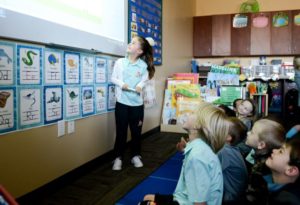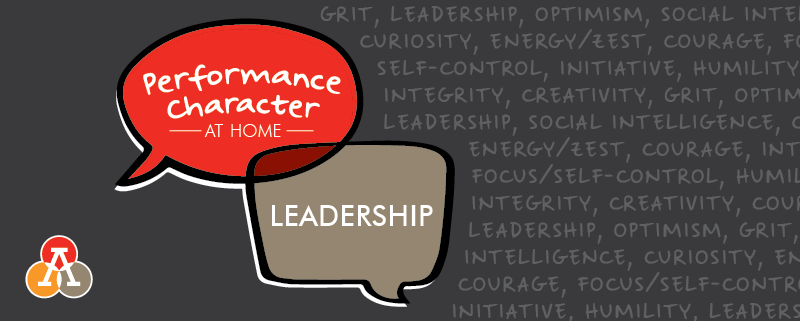“Leadership is the capacity to translate vision into reality.”
– Warren Bennis
At Athlos schools, we focus on teaching children the importance of 12 traits that we call Performance Character traits. Our Performance Character pillar recognizes the deep connection between these character traits and success. The development of Performance Character is integrated into every learning opportunity, allowing students to experience this connection first hand. Traits like humility, integrity, courage, and leadership become a lens through which students view their learning as about more than grades, but as learning for life.
Like all important lessons, reinforcing learning at home is a key factor to success. One of the best ways for parents to do this is to positively model the traits at home and to encourage trait development. In our 12-part ‘Performance Character at Home’ blog series, we will offer some simple, yet effective ways, to support children’s Performance Character development. In this blog, we look at leadership.
 What is Leadership?
What is Leadership?
Athlos defines leadership as: Making responsible decisions and motivating others to action.
Why is leadership important?
If all the Performance Character traits were laid out into a Venn diagram, leadership would be at the center. Leadership helps individuals build confidence and is an essential trait to develop for both children and adults. Everyone takes on a leader-like role of some form in life, whether it’s rallying a community toward a common goal, organizing an event, or being there for a friend. Being a leader often involves having courage to take initiative, integrity when no one is looking, and humility when receiving recognition.
How can I help my child develop leadership?
While many leadership skills come naturally, taking advantage of key moments can have a large impact on students’ development as leaders.
Here are a few ways to help promote this trait at home:
- Leadership isn’t so much taught as it is developed through opportunities with others. Extracurricular activities such as sports, volunteer work, and school clubs offer countless opportunities for children to develop leadership skills. Finding ways for children to work and engage with others can be tricky, but such moments play a major role when developing leader-like traits and skills.
- Letting children make decisions helps them weigh pros and cons and accept responsibility for their choices. Children are natural puzzle solvers, so a great way to help them develop initiative and leadership is allowing them the room to solve a problem on their own and encouraging them to ask for help when they need it.
- There are many characteristics of a good leader, but setting goals and seeing them through is a key quality that truly stands out from the rest. Goal setting can be a great driver for helping children learn to take action. This can be as simple as helping the family create a goal to keep a tidy home, or as complex as leading the community in cleaning up litter. It’s the ability to recognize a problem, set goals for a solution, and see those goals through to the end that helps even the youngest leaders become valuable members of society.


























